In remembrance of Wieckse Witte
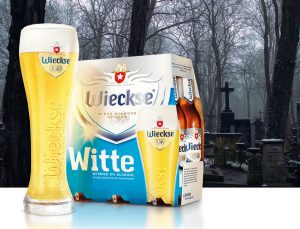 Saddened by the emptiness its passing leaves in our lives, but deeply thankful for all the great moments we shared together, and shocked that the end was more sudden than we expected, we now say goodbye to… Wieckse Witte. The Heineken brewery is killing it off. In September 2021 this white beer will disappear from the Dutch market. It has reached the respectable age of 31, a quiet funeral service will be held. In short, it’s time to look back on the life of a beer that may be a symbol of a specific era in Dutch beer history.
Saddened by the emptiness its passing leaves in our lives, but deeply thankful for all the great moments we shared together, and shocked that the end was more sudden than we expected, we now say goodbye to… Wieckse Witte. The Heineken brewery is killing it off. In September 2021 this white beer will disappear from the Dutch market. It has reached the respectable age of 31, a quiet funeral service will be held. In short, it’s time to look back on the life of a beer that may be a symbol of a specific era in Dutch beer history.
Brewing specialty beers? ‘It doesn’t pay,’ said Alger Oostra, CEO of the Dutch branch of Heineken, in 1985. ‘People will have one, two glasses, and then revert to ordinary lager again.’[1] In those years, over 99% of all beer drunk in the Netherlands was lager. Golden, crystal clear pilsener, preferably with not too much taste. In 1980, there were only 15 breweries left in the Netherlands, brewing at 20 locations, and at the top of the heap there was Heineken with a gargantuan market share of 57%. Yet, during the 1980s Heineken started to have reasons for worrying. Their market share declined to 52%, which prompted them to acquire the Limburg-based Brand brewery in 1989 in order to stay at the same level.
At the same time all sorts of weird little beers with weird little tastes came to Holland from abroad, and worse, the Dutch seemed to like them: Belgian amber beers such as De Koninck and Palm, trappist beers, alcohol bombs like Duvel, and white beer. Top-fermenting, can you imagine.
 At first, Heineken’s reaction against all these ‘specialty beers’ as they were called, took the shape of Amstel 1870, an ‘extra punchy pilsener without extra alcohol’.[2] That would teach those Dutch drinkers to stay off those stupid Belgian beers. But it didn’t help. In 1988, Heineken launched the low-alcohol beer Buckler, and a year later an extra dry beer called Dry 100. The former met with considerable success, until it was ridiculed on nationwide tv by Dutch comedian Youp van ‘t Hek in his 1989 New Year’s Eve show. The latter just disappeared like a wet fart in the wind.
At first, Heineken’s reaction against all these ‘specialty beers’ as they were called, took the shape of Amstel 1870, an ‘extra punchy pilsener without extra alcohol’.[2] That would teach those Dutch drinkers to stay off those stupid Belgian beers. But it didn’t help. In 1988, Heineken launched the low-alcohol beer Buckler, and a year later an extra dry beer called Dry 100. The former met with considerable success, until it was ridiculed on nationwide tv by Dutch comedian Youp van ‘t Hek in his 1989 New Year’s Eve show. The latter just disappeared like a wet fart in the wind.
Anyway, in the end the country’s biggest brewer came round. They needed a white beer. The big example was Hoegaarden, then owned by Interbrew (today’s AB InBev) from Belgium. Originally conceived by one-man-brewery Pierre Celis (read more about the history of Hoegaarden’s white beer), Interbrew had acquired it in phases from 1985 onwards. By 1990, the white beer market in the Netherlands was only 50,000 hectolitres a year, less than 0.5% of total beer consumption. Still it was big enough to be of some interest to Heineken, not in the least because sales of this beer type were clearly growing.[3]
It was decided that Heineken’s new white beer was to be brewed at De Ridder, a brewery in Maastricht taken over by Heineken in 1982. Here, in the southernmost tip of the country, right on the banks of the river Meuse in a part of the city called Wyck (pronounced ‘week’), head brewer Wim van Wijk developed the still nameless white beer. It did take some trouble though, because for years De Ridder had only been brewing bottom-fermented beers. But they pulled it off.[4]
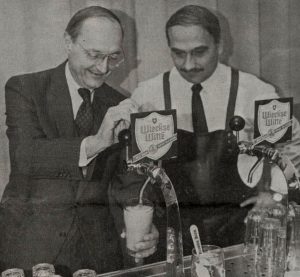 On 19 December 1990 Mr. Houben, mayor of Maastricht, broached the first barrel of Wieckse Witte. The marketing department had named the new beer after the city district of Wyck, but spelled it with ‘ie’ to avoid confusion about its pronunciation (most Dutch people would pronounce Wyck as ‘wike’). The label proudly boasted Maastricht’s coat of arms. They claimed it was based on a ‘carefully preserved own recipe’ from the brewery that was founded in 1857, but we can take that with a pinch of salt: in the 19th century Maastricht was known for its sour brown beers, there were some spelt beers based on the beers of Liège, but no white beers that I know of.[5] In any case, at first Wieckse Witte was only sold in bars in Maastricht, after a few months it was on sale in pubs in seven other university cities, only to be made available to the general public in bottles a months after that. A clever and well-tested method of keeping the beer exclusive at first and not roll it out with too much fanfare.
On 19 December 1990 Mr. Houben, mayor of Maastricht, broached the first barrel of Wieckse Witte. The marketing department had named the new beer after the city district of Wyck, but spelled it with ‘ie’ to avoid confusion about its pronunciation (most Dutch people would pronounce Wyck as ‘wike’). The label proudly boasted Maastricht’s coat of arms. They claimed it was based on a ‘carefully preserved own recipe’ from the brewery that was founded in 1857, but we can take that with a pinch of salt: in the 19th century Maastricht was known for its sour brown beers, there were some spelt beers based on the beers of Liège, but no white beers that I know of.[5] In any case, at first Wieckse Witte was only sold in bars in Maastricht, after a few months it was on sale in pubs in seven other university cities, only to be made available to the general public in bottles a months after that. A clever and well-tested method of keeping the beer exclusive at first and not roll it out with too much fanfare.
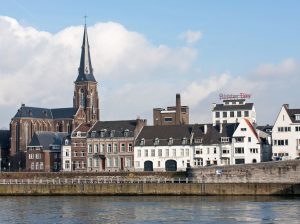 It worked: Wieckse sold like crazy. This also meant good news for the Ridder brewery, which employed 30 people at that point. In May 1991 two new fermenting tanks were installed to expand production capacity.[6] Walking beer legend Pierre Celis, father of the Hoegaarden brand, dropped by to compliment brewer Wim van Wijk on ‘an outstanding product.’[7] In June 1991 there even was a pilot project to sell Wieckse in a few French cities, such as Toulouse where there was a large student population. There, it was sold under the medieval-sounding name ‘Yseult’. After a second trial later that year the project was abandoned.[8]
It worked: Wieckse sold like crazy. This also meant good news for the Ridder brewery, which employed 30 people at that point. In May 1991 two new fermenting tanks were installed to expand production capacity.[6] Walking beer legend Pierre Celis, father of the Hoegaarden brand, dropped by to compliment brewer Wim van Wijk on ‘an outstanding product.’[7] In June 1991 there even was a pilot project to sell Wieckse in a few French cities, such as Toulouse where there was a large student population. There, it was sold under the medieval-sounding name ‘Yseult’. After a second trial later that year the project was abandoned.[8]
Demand for specialty beers skyrocketed in the Netherlands, while lager sales stagnated. In 1990, the Dutch drank 287,000 hectolitres of ‘special beers’, by 1992 it was already 548,000 hectolitres. In 1994, the market share of specialty beers had risen to 8%. That year, white beer sales alone made up 130,000 hectolitres. De Ridder could not keep up with demand and even had to enlist the trappist monks of Koningshoeven to provide additional capacity.[9]
All this gave a taste for more, not in the least for Heineken that within a few years’ time launched one new specialty beer after the other. In October 1992 the tried and tested Heineken bock beer was replaced by Tarwebok (‘wheat bock’), in November 1993 followed a New Year’s beer called 1994. In January 1994 they presented Kylian, more or less Irish-inspired but brewed in Mons-en-Baroeul in Northern France. In July 1994 followed the low-alcohol (2% ABV) Lingen’s Blond and in November 1994 Maastricht-based star orchestra leader André Rieu presented the new amber-coloured Vos at the Ridder brewery. Apart from that, Heineken imported the Belgian beers Duvel and De Koninck, among others.[10]
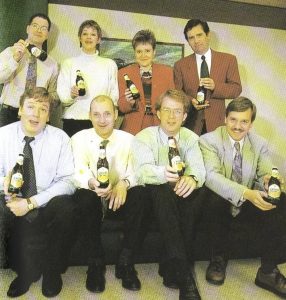 It all happened following the proven concept of starting with a heap of market research, followed by brain storm sessions on a white flip chart, creating slick labels and then unleashing a carpet bombing of commercials on nationwide tv and newspaper media. After all, Heineken is only a marketing machine where they happen to brew beer. But did this mean the Dutch beer drinkers let these brands the Heineken marketing people came up with into their hearts? Hardly. It may be telling that of all these new brands Wieckse Witte lasted the longest: a straightforward beer type, developed in a real small-scale brewery and overtly linked to the city it came from. White beer from Maastricht, it was as simple as that.
It all happened following the proven concept of starting with a heap of market research, followed by brain storm sessions on a white flip chart, creating slick labels and then unleashing a carpet bombing of commercials on nationwide tv and newspaper media. After all, Heineken is only a marketing machine where they happen to brew beer. But did this mean the Dutch beer drinkers let these brands the Heineken marketing people came up with into their hearts? Hardly. It may be telling that of all these new brands Wieckse Witte lasted the longest: a straightforward beer type, developed in a real small-scale brewery and overtly linked to the city it came from. White beer from Maastricht, it was as simple as that.
After all, who or what was this Lingen, of Lingen’s Blond? What sort of beer was Kylian meant to represent, where was it supposed to come from, and why should we drink it? What made it necessary to put wheat into bock beer, and who exactly was craving for a Vos? In hindsight all these brands just smelt too much of fake, of made-up, of beer without a past and without a future. Kylian was already discontinued in 1999, the New Year’s beer disappeared in 2002, Vos around 2004, Lingen’s Blond may have made it into the 2010s, and the Tarwebok was withdrawn from circulation only last year.
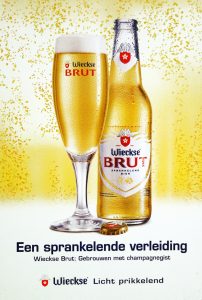 The success of Wieckse Witte did not save its brewery. Among other things De Ridder was severely hampered by a lack of possibilities for expansion, right in the middle of the city. In late December 2002 it closed, while production was transferred in phases to the Heineken plant at Den Bosch.[11] With the original brewery shut down, the brand received a freshening-up. In 2003 new labels were introduced and two new variants: Wieckse Lichte, a ‘light’ version of only 3.2% ABV, and Wieckse Brut, a sparkling ‘sum of white beer and champagne yeast’. That was not entirely true: Wieckse Brut did not contain one grain of wheat, and therefore had nothing to do with actual white beer.[12] Both beers met with little success.
The success of Wieckse Witte did not save its brewery. Among other things De Ridder was severely hampered by a lack of possibilities for expansion, right in the middle of the city. In late December 2002 it closed, while production was transferred in phases to the Heineken plant at Den Bosch.[11] With the original brewery shut down, the brand received a freshening-up. In 2003 new labels were introduced and two new variants: Wieckse Lichte, a ‘light’ version of only 3.2% ABV, and Wieckse Brut, a sparkling ‘sum of white beer and champagne yeast’. That was not entirely true: Wieckse Brut did not contain one grain of wheat, and therefore had nothing to do with actual white beer.[12] Both beers met with little success.
Things went better for the Wieckse Rosé, that was unleashed onto the general public in April 2006. This pink, fruity version at 4.5% had in fact been copied from the popular Wittekerke Rosé made by the De Brabandere brewery in West-Flanders. Heineken brewed it in Belgium at De Smedt, also known as Affligem, a brewery they had taken over recently.[13] They happily kept following trends this way: both the Wieckse Witte and the Rosé got a 0.0% version in 2011, and in 2015 they joined the Radler race with a Wieckse Radler (a low-alcohol ‘cyclist beer’, a style originally from Germany). The following year they also introduced the Radler variants Ice Tea Green and Red Fruit. Typical: in recent years big brewers like Heineken seem mostly eager to conquer the soft drinks and lemonade market, instead of making people happy with good beer. Today’s Heineken 0.0 fits exactly into that trend.
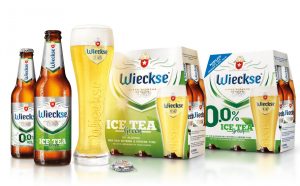 All in all, slowly but certainly things got quiet around Wieckse Witte. The popularity of white beer has been dwindling for years, dwarfed by new bright stars in the sky, such as IPA and saison. It has run out of steam, and then came the whole corona business.
All in all, slowly but certainly things got quiet around Wieckse Witte. The popularity of white beer has been dwindling for years, dwarfed by new bright stars in the sky, such as IPA and saison. It has run out of steam, and then came the whole corona business.
This year they’re pulling the plug for Wieckse Witte, after 31 years of loyal service. Where necessary, it will be replaced by Affligem White. The Affligem abbey beer range is more known internationally (and probably also easier to pronounce). This is Dutch beer history happening before your very eyes: after this summer, Wieckse Witte will be a lost beer.
[1] A.C.M. Jansen, Bier in Nederland en België. Een geografie van de smaak, Utrecht 1987, p. 147.
[2] De Telegraaf 6-8-1987.
[3] Vers van ‘t vat December 1990. Compliments to Heineken by the way for putting their old annual reports and staff magazines online.
[4] Heineken International magazine, December 1991.
[5] Limburgs dagblad 20-12-1990.
[6] Vers van ‘t vat June 1991.
[7] Heineken International magazine, December 1991.
[8] Vers van ‘t vat December 1991.
[9] Trouw 16-9-1993; Limburgs dagblad 24-9-1994.
[10] AD 6-10-1992; Trouw 16-9-1993, 6-4-1994; Limburgs Dagblad 16-11-1994.
[11] Vers van ‘t vat November 2002.
[12] PINT Magazine 136 (Juni 2003).
[13] PINT Magazine 153 (April 2006).
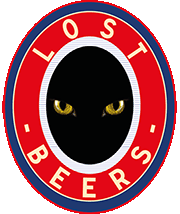






What happened to Wieckse rose?
This was a really well written article about the beer. Thank you. I got one of their glasses at the thrift stores and hadn’t heard of the beer. Ashame I’ll never be able to drink it.